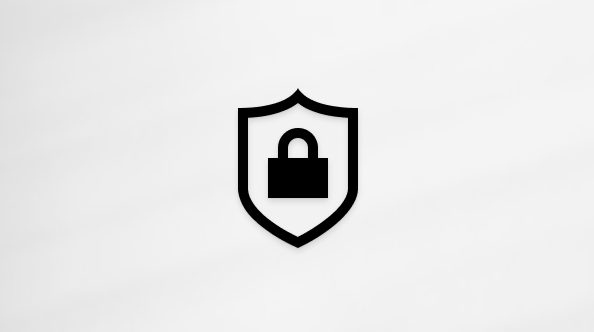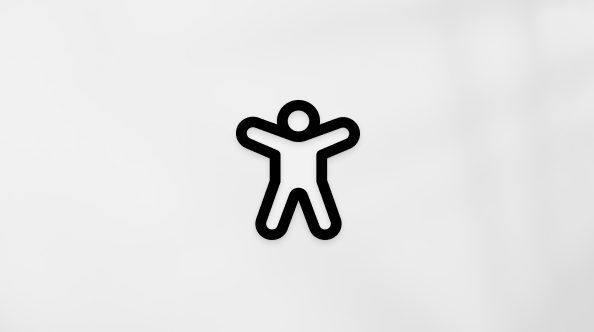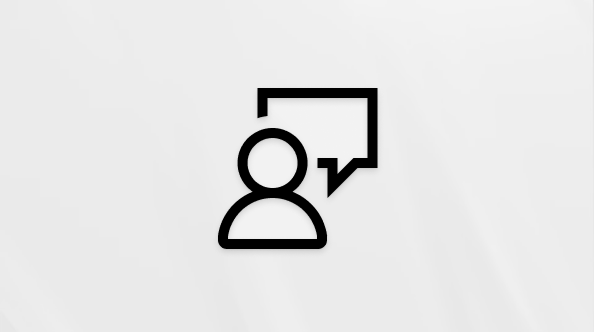Surface ses donatılarının sorunlarını giderme
Surface cihazınızda ses, ses, ses kayıttan yürütme veya kayıtla ilgili sorun yaşıyorsanız veya kulaklık, harici hoparlör veya mikrofon gibi bir ses aksesuarıyla ilgili sorun yaşıyorsanız deneyebileceğiniz bazı şeyler şunlardır.
İlk olarak denenecek şeyler
Ses sorun gidericisini çalıştırma
Yardım Al uygulamasında otomatik ses sorun gidericisini çalıştırmayı deneyin. Yardım Alın tanılamayı otomatik olarak çalıştırır ve ses ve ses sorunlarının çoğunu düzeltmek için doğru adımları uygular.
Engelleri kaldırma
Ekran koruyucuları veya çıkartmalar da dahil olmak üzere Surface'ınızın hoparlör ve mikrofon açıklıklarını hiçbir şeyin engellemediğinden emin olun. Hoparlör ve mikrofon açıklıklarının nerede olduğundan emin değilseniz bkz. Surface özellikleri.
Ses donatısı bağlantılarını denetleme
Surface hoparlörlerinizden ses duyabiliyor ancak aksesuardan ses duyamıyorsanız aksesuarın çalıştığından ve düzgün bağlandığından emin olun.
-
İstenen çıkış cihazının seçili olduğundan emin olun.
Ses ayarları'nda , Çıkış > Sesin çalınacağı yeri seçin altında aşağı oku ve ardından istediğiniz çıkış cihazını seçin.
Not: Bazı durumlarda, kulaklık veya hoparlör gibi bir ses cihazı 3,5mm jak'a bağlandığında, ses cihazı hemen algılanmayabilir. Surface Connect kablosunun bağlantısını kesin ve ardından ses cihazlarını yeniden algılamak için yeniden bağlayın.
-
Surface cihazınızı aksesuara bağlayan kabloların güvenli bir şekilde takılı olup olmadığını denetleyin. Bağlantı güvenliyse ancak aksesuardan hala ses duyamıyorsanız farklı kablolar kullanmayı deneyin.
-
Tüm ses uygulamalarını kapatın, ardından Surface cihazınızdan ve aksesuardan tüm aksesuar kablolarını çıkarın ve yeniden bağlayın.
-
Bluetooth ® kablosuz teknolojisini kullanan aksesuarların Surface cihazınızla doğru eşleştirilmiş olduğundan emin olun.
-
Ses dinlemeye çalışırken Surface Dock kullanıyorsanız bkz. Surface Dock sorunlarını giderme.
Ses düzeyini ayarlama
Ses düzeyi düzeylerini doğru yerlerde ayarladığınızdan emin olun. Birimi çeşitli yerlerde denetleyebilirsiniz:
-
Ses düzeyi düğmesi: Sesi yukarı veya aşağı ayarlamak için Surface'ınızın ses düzeyi düğmesine basın.
-
Klavye: Surface Type Cover veya klavyenizde ses düzeyi tuşları varsa sesi alçalt, sesi aç veya sesi kapat tuşuna basın.
-
Masaüstü görev çubuğu: Masaüstü görev çubuğunda Hoparlörler

-
Ses donatıları: Kulaklık, hoparlör, telefon veya diğer ses aksesuarı üzerindeki ses düzeyini ayarlayın veya aksesuara dahil olan yazılımda ayarlayın. Ses düzeyi düzeylerini ayarlama hakkında daha fazla bilgi edinmek için aksesuarınızla birlikte gelen bilgileri kontrol edin veya üreticinin web sitesine gidin.
-
Apps: Bazı uygulamalar, uygulama içinde bir ses denetimine sahiptir.
Notlar:
-
Surface cihazınızdaki ses düzeyi düğmesi ve görev çubuğundaki masaüstü ses düzeyi ayarı birlikte çalışır. Bir ayarda ayarı yükseltir, düşürür veya sessize alırsanız, diğerindeki ses düzeyi de değişir.
-
Uygulamalardaki ve kulaklık ve harici hoparlör gibi aksesuarlardaki ses düzeyi denetimleri, Surface'ınızın yerleşik denetimlerinden bağımsız olarak çalışabilir. Ses düzeyini birden fazla yerde ayarlamanız gerekebilir.
Kaydın kalitesini denetleme
Hoparlörlerinizden veya bir ses aksesuarından gelen ses kalitesi iyi değilse, ses kaydının kendisi iyi kalitede değildir. Aynı kaydı farklı bir cihazda dinlemeyi deneyin.
Mikrofon ayarlarını ayarlama
Mikrofonu kullanırken insanlar sizi duymakta sorun yaşıyorsa veya ses kaydederken sorun yaşıyorsanız mikrofon ayarlarınızı ayarlamayı deneyin:
-
İstenen giriş cihazının seçili olduğundan emin olun.
Ses ayarları'nda , Giriş > Konuşmak veya kaydetmek için bir cihaz seçin altında aşağı oku ve ardından istediğiniz giriş cihazını seçin.
-
"Uygulamaların ve Windows'un bu cihazı ses için kullanmasına izin ver" seçeneğine izin verildiğinden emin olun.
-
Mikrofonunuz istediğiniz düzeylerde kayıt olana kadar Giriş ses düzeyi kaydırıcılarını ayarlayın. Kullanacağınız düzeyler, arka plan gürültüsü miktarına ve Surface'ınızın yerleşik mikrofonunu mu yoksa harici mikrofonu mu kullandığınıza bağlı olarak değişir.
-
Özel Ses geliştirmelerini kapatmayı deneyin.
-
Mikrofonunuzu test etmek için Testi başlat'ı seçin.
-
Bluetooth ® kablosuz teknolojisini kullanan aksesuarların Surface cihazınızla doğru eşleştirilmiş olduğundan emin olun.
Hala sorun yaşıyorsanız Çözüm 1'e gidin.
Çözüm 1: En son güncelleştirmeleri alma
Surface uygulamasını kullanarak Surface sürücülerinizin ve üretici yazılımınızın durumunu hızlıca kontrol edebilirsiniz.
-
Güncelleştirme durumunu kontrol etmek için Surface uygulamasında Yardım ve Destek'i genişletin.
-
Mevcut güncelleştirmeler varsa, Windows Update’i açıp mevcut güncelleştirmeleri yüklemek için Güncelleştirmeleri denetle düğmesini seçin.
Not: Surface uygulaması yüklü değilse Microsoft Store'dan indirebilirsiniz. İndirildiğinde Başlat’ı seçin, Surface’ı arayın, ardından sonuçlar listesinden uygulamayı seçin.
Sorun yaşamaya devam ediyorsanız Çözüm 3'e gidin.
Çözüm 2: Surface cihazınızı yeniden başlatın
-
Başlangıç'a gidin, ardından Güç > Yeniden Başlat'ı seçin.
-
Surface'ınız yeniden başlatıldıktan ve Windows'ta yeniden oturum açtıktan sonra, yerleşik hoparlörlerde bir şeyler dinlemeyi (müzik veya video çalma) deneyin ve yerleşik mikrofonu kullanarak bir şey kaydetmeyi deneyin.
Sorun yaşamaya devam ediyorsanız Çözüm 4'e gidin.
Çözüm 3: Kapatmayı zorlama
Aç > Aç > Kapat'ı seçin ve Surface cihazınızın kapanmasını bekleyin. Ardından açma/kapama düğmesini 20 saniye basılı tutun. Logo ekranının birkaç saniye sonra göründüğünü görürseniz, logo ekranını yeniden görene kadar 20 saniye boyunca basılı tutun. Daha fazla bilgi için bkz. Surface'ınızı kapatmaya zorlama ve yeniden başlatma .
Sorun yaşamaya devam ediyorsanız Çözüm 5'e gidin.
Çözüm 4: Surface cihazınızı geri yükleme veya sıfırlama
Ses sorunları yaşamaya devam ediyorsanız Surface cihazınızı geri yüklemeyi veya sıfırlamayı deneyin. Nasıl yapılacağını öğrenmek için bkz. Surface'ı geri yükleme veya sıfırlama.
Daha fazla yardım mı gerekiyor?
Surface'ınızda yerleşik olarak bulunan hoparlörler veya mikrofonlar hala gerektiği gibi çalışmıyorsa veya ses düzeyi basmalı anahtar Surface'ınızı sıfırladıktan sonra kilitli kalırsa Surface'ınızın servise ihtiyacı olabilir. Surface için hizmet alma bölümüne gidin.
Bu çözümleri denediyseniz ancak ses aksesuarınız hala çalışmıyorsa destek için aksesuar üreticisine başvurun.
İlgili konular
Surface cihazınızda ses, ses, ses kayıttan yürütme veya kayıtla ilgili sorun yaşıyorsanız veya kulaklık, harici hoparlör veya mikrofon gibi bir ses aksesuarıyla ilgili sorun yaşıyorsanız deneyebileceğiniz bazı şeyler şunlardır.
İlk olarak denenecek şeyler
Ses sorun gidericisini çalıştırma
Yardım Al uygulamasında otomatik ses sorun gidericisini çalıştırmayı deneyin. Yardım Alın tanılamayı otomatik olarak çalıştırır ve ses ve ses sorunlarının çoğunu düzeltmek için doğru adımları uygular.
Engelleri kaldırma
Ekran koruyucuları veya çıkartmalar da dahil olmak üzere Surface'ınızın hoparlör ve mikrofon açıklıklarını hiçbir şeyin engellemediğinden emin olun. Hoparlör ve mikrofon açıklıklarının nerede olduğundan emin değilseniz bkz. Surface özellikleri.
Ses donatısı bağlantılarını denetleme
Surface hoparlörlerinizden ses duyabiliyor ancak aksesuardan ses duyamıyorsanız aksesuarın çalıştığından ve düzgün bağlandığından emin olun.
-
İstenen çıkış cihazının seçili olduğundan emin olun.
Ses ayarlarını açmaSes ayarları'nda , Çıkış > Çıkış cihazınızı seçin altında, seçenekler listesinden istediğiniz çıkış cihazını seçin.
Not: Bazı durumlarda, kulaklık veya hoparlör gibi bir ses cihazı 3,5mm jak'a bağlandığında, ses cihazı hemen algılanmayabilir. Surface Connect kablosunun bağlantısını kesin ve ardından ses cihazlarını yeniden algılamak için yeniden bağlayın.
-
Surface cihazınızı aksesuara bağlayan kabloların güvenli bir şekilde takılı olup olmadığını denetleyin. Bağlantı güvenliyse ancak aksesuardan hala ses duyamıyorsanız farklı kablolar kullanmayı deneyin.
-
Tüm ses uygulamalarını kapatın, ardından Surface cihazınızdan ve aksesuardan tüm aksesuar kablolarını çıkarın ve yeniden bağlayın.
-
Bluetooth ® kablosuz teknolojisini kullanan aksesuarların Surface cihazınızla doğru eşleştirilmiş olduğundan emin olun.
-
Ses dinlemeye çalışırken Surface Dock kullanıyorsanız bkz. Surface Dock sorunlarını giderme.
Ses düzeyini ayarlama
Ses düzeyi düzeylerini doğru yerlerde ayarladığınızdan emin olun. Birimi çeşitli yerlerde denetleyebilirsiniz:
-
Ses düzeyi düğmesi: Sesi yukarı veya aşağı ayarlamak için Surface'ınızın ses düzeyi düğmesine basın.
-
Klavye: Surface Type Cover veya klavyenizde ses düzeyi tuşları varsa sesi alçalt, sesi aç veya sesi kapat tuşuna basın.
-
Masaüstü görev çubuğu: Masaüstü görev çubuğunda Hoparlörler

-
Ses donatıları: Kulaklık, hoparlör, telefon veya diğer ses aksesuarı üzerindeki ses düzeyini ayarlayın veya aksesuara dahil olan yazılımda ayarlayın. Ses düzeyi düzeylerini ayarlama hakkında daha fazla bilgi edinmek için aksesuarınızla birlikte gelen bilgileri kontrol edin veya üreticinin web sitesine gidin.
-
Apps: Bazı uygulamalar, uygulama içinde bir ses denetimine sahiptir.
Notlar:
-
Surface cihazınızdaki ses düzeyi düğmesi ve görev çubuğundaki masaüstü ses düzeyi ayarı birlikte çalışır. Bir ayarda ayarı yükseltir, düşürür veya sessize alırsanız, diğerindeki ses düzeyi de değişir.
-
Uygulamalardaki ve kulaklık ve harici hoparlör gibi aksesuarlardaki ses düzeyi denetimleri, Surface'ınızın yerleşik denetimlerinden bağımsız olarak çalışabilir. Ses düzeyini birden fazla yerde ayarlamanız gerekebilir.
Kaydın kalitesini denetleme
Hoparlörlerinizden veya bir ses aksesuarından gelen ses kalitesi iyi değilse, ses kaydının kendisi iyi kalitede değildir. Aynı kaydı farklı bir cihazda dinlemeyi deneyin.
Mikrofon ayarlarını ayarlama
Mikrofonu kullanırken insanlar sizi duymakta sorun yaşıyorsa veya ses kaydederken sorun yaşıyorsanız mikrofon ayarlarınızı ayarlamayı deneyin:
-
Başlangıç > Ayarları > Ses > Ses denetim masasına gidin.
-
Kayıt sekmesini seçin, istediğiniz mikrofonu seçin ve özellikler'i seçin. Surface cihazınıza etkinleştirilmiş ve bağlı bir mikrofon seçtiğinizden emin olun.
-
Düzeyler sekmesini seçin. İki kaydırıcı görürsünüz.
Mikrofon: Mikrofon ses düzeyini denetler.
Mikrofon Yükseltme: Mikrofonun giriş sinyalinin gücünü denetler.
Not: Cihazınızda Mikrofon Yükseltme kaydırıcısı olmayabilir. Bunun yerine Mikrofon kaydırıcısını kullanabilirsiniz.
-
Mikrofonunuz istediğiniz düzeylerde kayıt olana kadar kaydırıcıları ayarlayın. Kullanacağınız düzeyler, arka plan gürültüsü miktarına ve Surface'ınızın yerleşik mikrofonunu mu yoksa harici mikrofonu mu kullandığınıza bağlı olarak değişir. İyi bir başlangıç noktası , Mikrofon'un 50, Mikrofon Boost'un ise +24,0 dB olarak ayarlanmasıdır.
Hala sorun yaşıyorsanız Çözüm 1'e gidin.
Çözüm 1: En son güncelleştirmeleri alma
Surface uygulamasını kullanarak Surface sürücülerinizin ve üretici yazılımınızın durumunu hızlıca kontrol edebilirsiniz.
-
Güncelleştirme durumunu kontrol etmek için Surface uygulamasında Yardım ve Destek'i genişletin.
-
Mevcut güncelleştirmeler varsa, Windows Update’i açıp mevcut güncelleştirmeleri yüklemek için Güncelleştirmeleri denetle düğmesini seçin.
Not: Surface uygulaması yüklü değilse Microsoft Store'dan indirebilirsiniz. İndirildiğinde Başlat’ı seçin, Surface’ı arayın, ardından sonuçlar listesinden uygulamayı seçin.
Sorun yaşamaya devam ediyorsanız Çözüm 3'e gidin.
Çözüm 2: Surface cihazınızı yeniden başlatın
-
Power > Restart > Başlat'a gidin.
-
Surface'ınız yeniden başlatıldıktan ve Windows'ta yeniden oturum açtıktan sonra, yerleşik hoparlörlerde bir şeyler dinlemeyi (müzik veya video çalma) deneyin ve yerleşik mikrofonu kullanarak bir şey kaydetmeyi deneyin.
Sorun yaşamaya devam ediyorsanız Çözüm 4'e gidin.
Çözüm 3: Kapatmayı zorlama
Nasıl yapılacağını öğrenmek için bkz. Kapatmaya zorlama ve Surface cihazınızı yeniden başlatma .
Sorun yaşamaya devam ediyorsanız Çözüm 5'e gidin.
Çözüm 4: Surface cihazınızı geri yükleme veya sıfırlama
Ses sorunları yaşamaya devam ediyorsanız Surface cihazınızı geri yüklemeyi veya sıfırlamayı deneyin. Nasıl yapılacağını öğrenmek için bkz. Surface'ı geri yükleme veya sıfırlama.
Daha fazla yardım mı gerekiyor?
Surface'ınızda yerleşik olarak bulunan hoparlörler veya mikrofonlar hala gerektiği gibi çalışmıyorsa veya ses düzeyi basmalı anahtar Surface'ınızı sıfırladıktan sonra kilitli kalırsa Surface'ınızın servise ihtiyacı olabilir. Surface için hizmet alma bölümüne gidin.
Bu çözümleri denediyseniz ancak ses aksesuarınız hala çalışmıyorsa destek için aksesuar üreticisine başvurun.











